BY LETTER
Chara (Beta Canum Venaticorum)
Galactography > Regions of Space > Inner Sphere
Galactography > Systems and Worlds > Systems & Worlds C - D
Galactography > Systems and Worlds > Systems & Worlds C - D
Beta Canum Venaticorum c, target of a slow Generation Ship mission | |
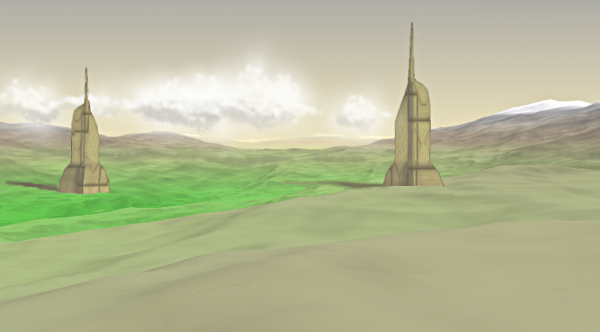 Image from Steve Bowers | |
| Arcologies on Euphrosyne | |
Star: Chara (Beta Canum Venaticorum) | |
| Names | Beta Canum Venaticorum, Chara (Joy, Chiri), Asterion |
|---|---|
| Mass | 2.038E30 kg (1.025 x Sol) |
| Radius | 781,271 km (1.123 x Sol) |
| Luminosity | 1.151 x Sol (bolometric) |
| Temperature | 5,653 Kelvin |
| Spectral type | G0V |
| Age | 6.2 billion years |
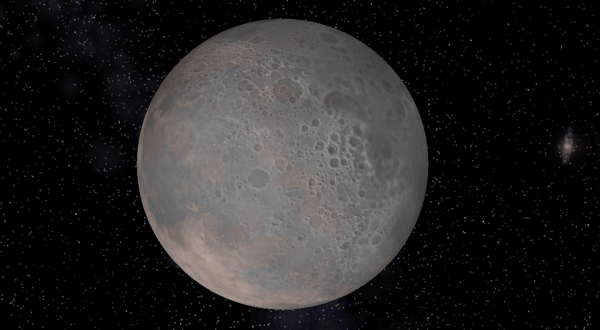 Image from The Astronomer and Steve Bowers | |
| Aglaea, before colonisation | |
Planet: Aglaea | |
| Orbital characteristics: | - Semi-major axis: 45,777,000 km (0.306 AU) - Orbital period: 61.068 days (0.167 Julian years) - Eccentricity: 0.175 - Inclination: 5.596° |
|---|---|
| Physical characteristics | - Type: Hermean - Mass: 1.290E23 kg - Radius: 1,838.0 km - Density: 4,960 kg/m^3 - Gravitational acceleration: 2.549 m/s^2 (0.260 g) - Rotation period: Tidally-locked (3:2 spin-orbit) - Albedo: 0.379 - Average surface temperature: 463 K |
| Satellites | none |
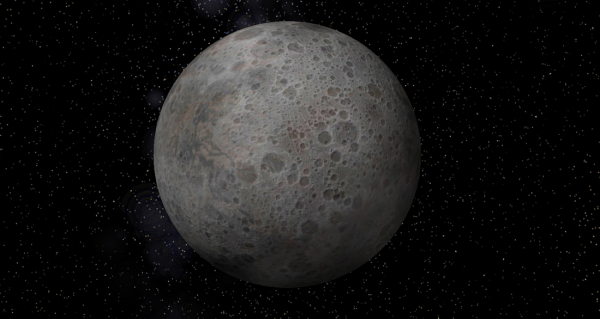 Image from The Astronomer and Steve Bowers | |
| Thalia before colonisation | |
Planet: Thalia | |
| Orbital characteristics | - Semi-major axis: 120,277,000 km (0.804 AU) - Orbital period: 260 days (0.712 Julian years) - Eccentricity: 0.102 - Inclination: 2.494° |
|---|---|
| Physical characteristics | - Type: Selenian - Mass: 1.984E+23 kg - Radius: 2,292.6 km - Density: 3,931 kg/m^3 - Gravitational acceleration: 2.519 m/sec^2 (0.257 g) - Rotation period: 64,476 s (17.910 hr) - Obliquity: 1.476° - Albedo: 0.113 - Equilibrium temperature: 313 Kelvin |
| Satellites | none |
| Lagrangian points | Constructs in place in the Lagrange Points include - L4: Mechosystem Laboratories - L5: Mechosystem Laboratories |
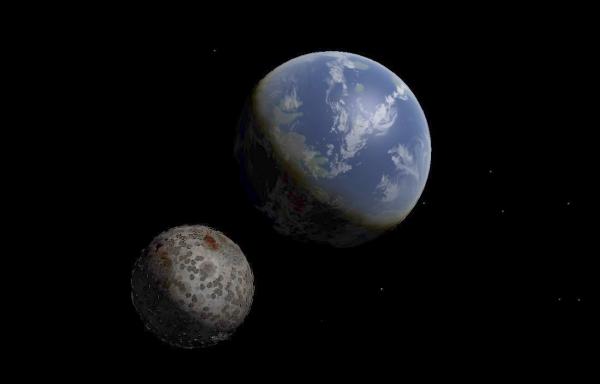 Image from Steve Bowers | |
| Euphrosyne after terraformation, and its moon, Mirth | |
Planet: Euphrosyne | |
| Orbital characteristics | - Semi-major axis: 190,887,000 km (1.276 AU) - Period: 520.0 days (1.424 Julian years) - Eccentricity: 0.051 - Inclination: 4.979° |
|---|---|
| Physical characteristics | - Type: NeoGaian, terraformed from EuArean. - Mass: 1.534E24 kg - Radius: 4,214.8 km - Density: 4,891 kg/m^3 - Gravitational acceleration: 5.763 m/s^2 (0.587 g) - Rotation period: 79,520 s (22.089 hr) - Obliquity: 12.3° - Albedo: 0.245 - Average surface temperature: 284 K |
| Atmosphere | - Surface pressure: 114 kPa - Composition (after terrformation): 80% N2, 18% O2, 1% Ar, 1% other |
| Satellites | 1) Mirth: Type = Moon Brain, Semi-major axis = 98,412 km, Orbital period = 7.016 days, Eccentricity = 0.004, Inclination = 0.009°, Radius = 401.5 km, Albedo = 0.125 |
| Lagrangian points | Constructs in place in the Lagrange Points include - L1: Furaha Magshield - L4: Leading Euthymia Cloud - L5: Trailing Euthymia Cloud |
Planets: Phaenna/Cleta | |
| Orbital characteristics | - Semi-major axis: 245,041,000 km (1.638 AU) - Period: 756.3 days (2.071 Julian years) - Eccentricity: 0.036 - Inclination: 0.520° |
|---|---|
| Physical characteristics | - Type: SuperEuropan - Mass: 2.248E25 kg - Radius: 9,893.4 km - Density: 5,542 kg/m^3 - Gravitational acceleration: 15.328 m/s^2 (1.563 g) - Rotation period: Tidally-locked with Cleta - Albedo: 0.681 - Average surface temperature: 181 K |
| Atmosphere | - Surface pressure: 58 kPa - Composition: 74% N2, 25% O2, 1% other |
| Satellites | 1) Cleta: Type = GaianPaludial, Semi-major axis = 519,670 km, Orbital period = 20.431 days, Eccentricity = 0.023, Inclination = 35.928°, Mass = 4.160E+24 kg, Radius = 5,967.2 km, Albedo = 0.102 |
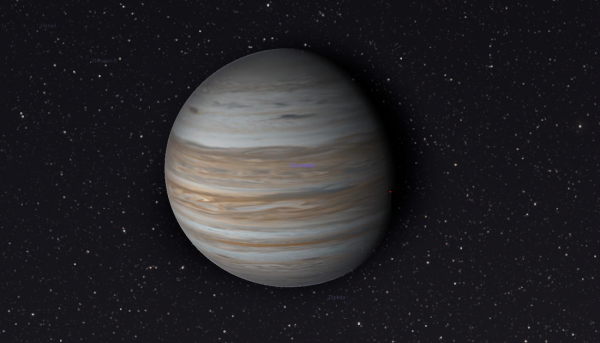 Image from The Astronomer and Steve Bowers | |
| The gas giant Eurynome | |
Planet: Eurynome | |
| Orbital characteristics | - Semi-major axis: 704,307,000 km (4.708 AU) - Period: 10.089 Julian years - Eccentricity: 0.040 - Inclination: 5.795° |
|---|---|
| Physical characteristics | - Type: SubJovian. - Mass: 4.524E26 kg - Radius: 53,926.3 km - Density: 689 kg/m^3 - Gravitational acceleration: 10.383 m/s^2 (1.058 g) - Rotation period: 47,833 s (13.287 hr) - Obliquity: 10.837° - Albedo: 0.487 - Average surface temperature: 142 K |
| Satellites | 1) Euthenia. 2) Eucleia. 3) Eupheme. 4) Philophrosyne. |
Planet: Peitho | |
| Orbital characteristics | - Semi-major axis: 3,361,913,000 km (22.473 AU) - Period: 105.227 Julian years - Eccentricity: 0.177 - Inclination: 4.363° |
|---|---|
| Physical characteristics | - Type: EuNeptunian. - Mass: 6.305E25 kg - Radius: 20,408.0 km - Density: 1,771 kg/m^3 - Gravitational acceleration: 10.104 m/s^2 (1.030 g) - Rotation period: 74,002 s (20.556 hr) - Obliquity: 41.9° - Albedo: 0.357 - Average surface temperature: 86 K |
| Satellites | none |
History
Euphrosyne was detected in the early Interplanetary Age, and after the Technocalypse was the target of a slow-moving Generation Ship, the Endurance, which left Solsys in 710 AT and was due to arrive in 2795 AT. During this period, much faster ships from the First Federation and the Eridanus League had overtaken them. Following a mutiny, the colonists on board the Endurance chose not to decelerate on arrival, and the generation ship continued past Chara and into deep space.Around half the colonists from the Endurance were transferred to fast-moving conversion drive vessels and taken to join the colony on the third planet, Euphrosyne. This large Arean-type world was in the process of being terraformed. The arkship Endurance, and the remainder of its population, still continue to travel outwards, and is now more than a hundred light years from its original destination.
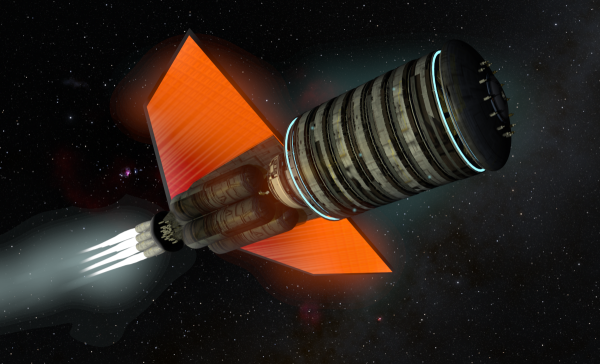 Image from Steve Bowers | |
| The Endurance on its way to Chara | |
Chara had good relations with its neighboring system, Arcadia, but apart from Cleta, the Chara system remained independent from the emerging Zoeific Biopolity. The nearby Fons Luminis also exerted considerable influence, but the Solar Dominion saw the system as no threat to their capital, and apart from several Solar Dominion outposts in the system's asteroid belt, the empire mostly left it alone.
This peace was broken at the beginning of the Version War, however. Chara was quickly (and, notably, without any resistance) annexed by the Solar Dominion to prevent the Standardizationists from claiming this strategic system first. It soon became a battleground between the invading Metasoft forces and the defending Solar Dominion. Ultimately, the Version Tree won a pyrrhic victory, and the worn-down fleet went on to fight in the First Battle of Klarus (the system also served as a staging point for the Metasoft forces during the Second Battle). After the war, the two empires agreed on dividing the system (except Cleta, which was already a Zoeific world) into two. The line between the sides had gradually blurred away since then, and in the Current Era, all Charan worlds have amicable relationships with each other.
The Current Era
In the Current Era, both Aglaea and Thalia are completely covered in an extremely diverse, colorful semi-feral mechosphere, consisting of many kinds of mobile robots, semifluid gelbots, and solid, immobile 'thinking rocks', all growing on the foundation smart matter mats. Aglaea is a densely populated Metasoft-Silicon Generation world, and Thalia is treated as a reserve and research site, leasing various craters out to entities wanting to try out their new mechosystem designs.Euphrosyne remains a relatively quiet world with few conflicts or intrigues. Solarist influences are strong, but so are the original Etodist traditions, a combination of which became the foundation of the modern Euphrosynese identity. The planet's night side is lit up not by cities, but by the solar forests, a biome consisting of various luminescent plants, machines, and hybrids, all glowing in yellow and light blue. Virtually all of the planetbound population lives in groups of arcologies, surrounded by parklands and nature.
Unlike its smaller Metasoft-aligned sibling worlds, much of the activities on Phaenna reside in its extensive subsurface ocean, hidden from the barren icy surface made home by few cryovecs. Beneath, thriving aquatic mechosystems reminiscent of the ones at Aglaea and Thalia can be found, in contrast to its binary pair, Cleta, a long-time Zoeific Biopolity member, which has been enclosed within a canopy plant. The smaller planet's surface has become covered by an extensive envome jungle, illuminated by bio-chandeliers and mega-fireflies.
Notably, over three-fourth of Eurynome's population is concentrated on its first and second moons, Euthenia and Eucleia, which was converted into geoflex computronium ball and became the system's major virchworld center. The other three moons are thinly populated by some virtuals and cryovecs. Eurynome is now largely uninhabited, with the former habitats turned into resorts supporting streams of Charan tourists coming to enjoy the view of the gas giant's cloudtops.
Peitho's atmosphere is saturated by several layers of floating islands, held afloat by both the vacuum dirigible pores and the global network of angelnetting. Using the very same angelnet, its citizens can fly without using any equipment, and indeed many residents regularly commute by flying in environment suits, but the air vehicles and sports using such vehicles are popular nonetheless.
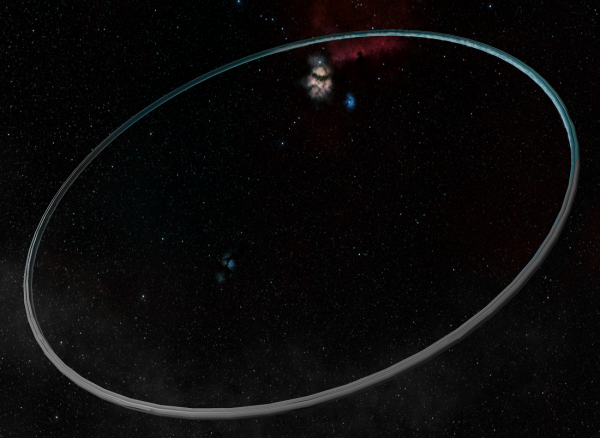 Image from Steve Bowers | |
| Xiyue Banks' Orbital | |
Related Articles
Appears in Topics
Development Notes
Text by Steve Bowers
Amended by The Astronomer 2019
Initially published on 08 November 2009.
Amended by The Astronomer 2019
Initially published on 08 November 2009.
Additional Information






